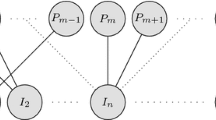Summary
The standard ideal free distribution (IFD) states how animals should distribute themselves at a stable competitive equilibrium. The equilibrium is stable because no animal can increase its fitness by changing its location. In applying the IFD to choice between patches of food, fitness has been identified with the net rate of energetic gain. In this paper we assess fitness in terms of survival during a non-reproductive period, where the animal may die as a result of starvation or predation. We find the IFD when there is a large population that can distribute itself between two patches of food. The IFD in this case is state-dependent, so that an animal's choice of patch depends on its energy reserves. Animals switch between patches as their reserves change and so the resulting IFD is a dynamic equilibrium. We look at two cases. In one there is no predation and the patches differ in their variability. In the other, patches differ in their predation risk. In contrast to previous IFDs, it is not necessarily true that anything is equalized over the two patches.
Similar content being viewed by others
References
Abrahams, M. V. and Dill, L. M. (1989) A determination of the energetic equivalence of the risk of predation.Ecol. 70, 999–1007.
Bellman, R.Dynamic Programming, Princeton University Press, Princeton, New Jersey.
Caraco, T. and Lima, S. L. (1987) Survivorship, energy budgets and foraging risk. InQuantitative Analyses of Behavior (M. L. Commons, A. Kacelnik and S. J. Shuttleworth, eds) Vol. 6 Foraging. Erlbaum, New Jersey.
Fagen, R. (1987) A generalized habitat matching rule.Evol. Ecol. 1, 5–10.
Fretwell, S. D. and Lucas, H. L. (1970) On territorial behaviour and other factors influencing habitat distribution in birds.Acta Biotheoretica 19, 16–36.
Harper, D. G. C. (1982) Competitive foraging in mallards: ‘ideal free’ ducks.Anim. Behav. 30, 575–84.
Houston, A. I. and McNamara, J. M. (1986) Evaluating the selection pressure on foraging decisions. InRelevance of Models and Theories in Ethology (R. Campan and R. Zayan, eds) pp. 61–75, Privat, Toulouse.
Houston, A. I. and McNamara, J. M. (1987) Singing to attract a mate: a stochastic dynamic game.J. Theor. Biol. 129, 57–68.
Houston, A. I. and McNamara, J. M. (1988) Fighting for food: a dynamic version of the Hawk-Dove game.Evol. Ecol. 2, 51–64.
Houston, A. I. and McNamara, J. M. (1989) The value of food: effects of open and closed economies.Anim. Behav. 37, 546–62.
Lima, S. L. (1985) Maximizing feeding efficiency and minimizing time exposed to predators: a trade-off in the black-capped chickadee.Oecolog. 66, 60–7.
McNamara, J. M. (In press) The policy which maximises long term survival of an animal faced with the risks of starvation and predation.Adv. Appl. Prob.
McNamara, J. M. (1990) The starvation predation trade-off and some behavioural and ecological consequences. InBehavioural Mechanisms of Food Selection (R. N. Hughes, ed.) Springer Verlag, Berlin.
McNamara, J. M. and Houston, A. I. (1986) The common currency for behavioural decisions.Amer. Natur. 127, 358–78.
McNamara, J. M. and Houston, A. I. (1990) Starvation and predation in a patchy environment. InLiving in a Patchy Environment (B. Shorrocks and I. Swingland, eds) Oxford University Press, Oxford.
Mangel, M. and Clark, C. W. (1986) Towards a unified foraging theory.Ecol. 67, 1127–38.
Milinski, M. (1984) Competitive resource sharing: an experimental test of a learning rule for ESSs.Anim. Behav. 32, 233–42.
Milinski, M. and Heller, R. (1978) Influence of a predator on the optimal foraging behaviour of sticklebacks (Gasterosteus aculeatus L.).Nat. 275, 642–4.
Newman, J. A. and Caraco, T. (1987) Foraging, predation hazard and patchy use in grey squirrels.Anim. Behav. 35, 1804–13.
Parker, G. A. (1978) Searching for mates. InBehavioural Ecology: An Evolutionary Approach (J.R. Krebs and N. B. Davies, eds) pp. 122–47. Blackwell Scientific Publications, Oxford.
Pulliam, H. R. and Caraco, T. (1984) Living in groups: is there an optimal group size? InBehavioural Ecology: an Evolutionary Approach (J. R. Krebs and N. B. Davies, eds) Blackwell Scientific Publications, Oxford.
Real, L. and Caraco, T. (1986) Risk and foraging in stochastic environments: theory and evidence.Ann. Rev. Ecol. Syst. 17, 371–90.
Recer, G. M. and Caraco, T. (1989) Food sharing, survival and the habitat-matching rule.Anim. Behav. 37, 153–68.
Rosenzweig, M. L. (1981) A theory of habitat selection.Ecol. 62, 327–35.
Ross, S. M. (1983)Introduction to Stochastic Dynamic Programming. Academic Press, New York.
Author information
Authors and Affiliations
Rights and permissions
About this article
Cite this article
McNamara, J.M., Houston, A.I. State-dependent ideal free distributions. Evol Ecol 4, 298–311 (1990). https://doi.org/10.1007/BF02270929
Issue Date:
DOI: https://doi.org/10.1007/BF02270929




